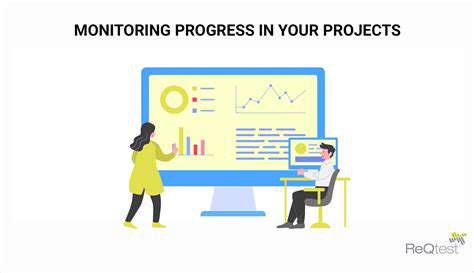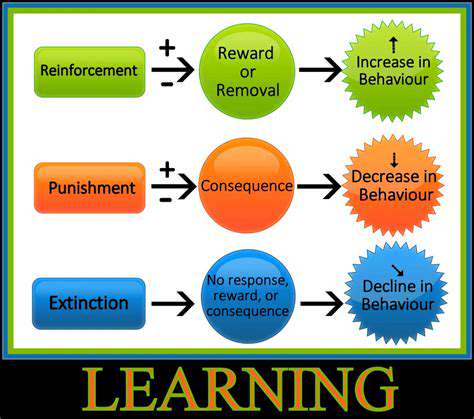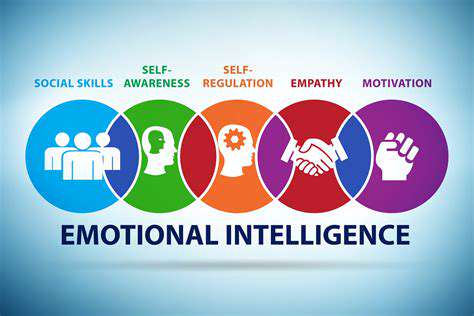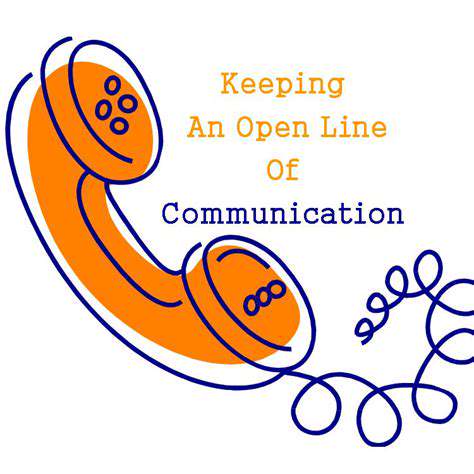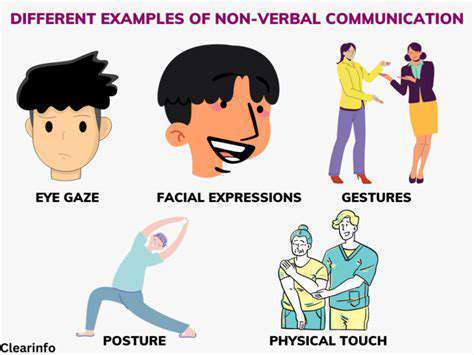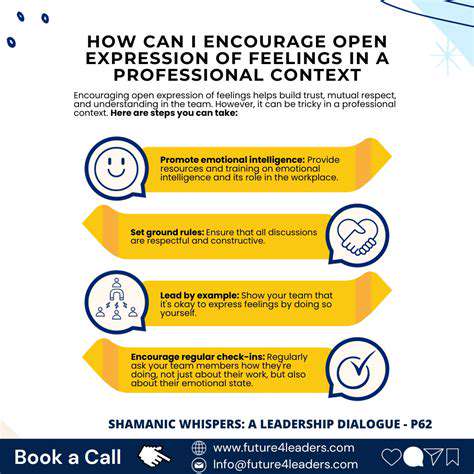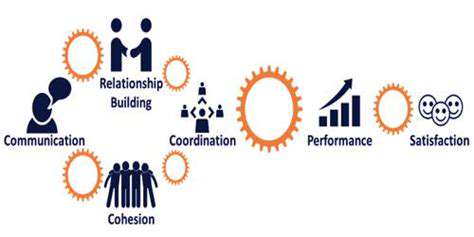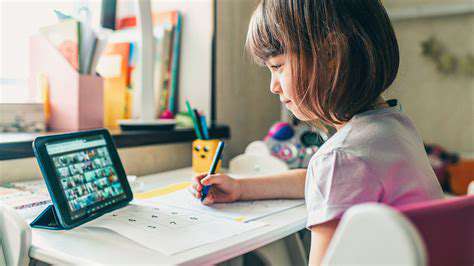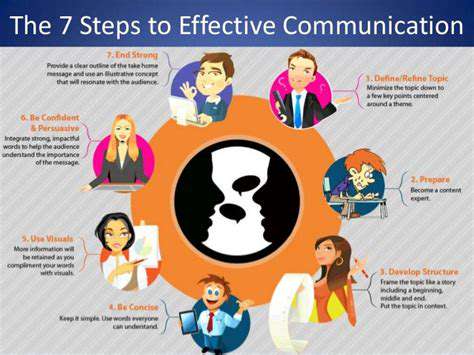Practical Techniques for Nurturing Emotional Intelligence in Kids
Table of contents
Active listening enhances children's emotional intelligence and understanding.
Safe environments encourage children to express feelings openly.
Emotional check-ins normalize discussions about feelings.
Teaching conflict resolution develops negotiation skills in children.
Expanding emotional vocabulary aids accurate expression of feelings.
Role-playing improves emotional intelligence through perspective-taking.
Modeling emotional regulation fosters effective management of feelings.
Reflection practices promote self-awareness and emotional growth.
Problem-solving skills foster independence and resilience in children.
Open-ended questions enhance critical thinking and exploration.
Encourage Open Communication
Developing Active Listening Skills
Effective communication truly begins with focused listening. When children speak, putting down your phone and maintaining eye contact can send a strong message that you value what they are saying. You might want to try paraphrasing: repeat what you heard in your own words, for example, \So you feel really upset when your desk mate takes your eraser, right?\ This method not only confirms understanding but also makes the child feel valued.
Weekend family theater is a great way to practice. Let children take turns playing the roles of teacher and student, experiencing different perspectives by switching roles. This immersive practice can help children capture subtle changes in expressions and tones, proving to be significantly more effective than simple lecturing.
Creating a Safe Space for Expression
Do you remember the frustration of having your feelings dismissed as a child? Establishing a judgment-free day is a clever idea — pick a day each week where any thoughts can be freely expressed without criticism. Transform the living room into a cozy corner with star lights and cushions; this warm space can magically open up children's conversations.
The concept of an emotion diary is worth trying. Prepare a locked notebook for children to document their feelings using stickers and doodles. One parent shared that three months later, her daughter drew a comic in the diary about the family's reconciliation, which initiated their first deep conversation.
Utilizing Emotional Check-Ins
An emotional weather forecast wall is both visual and engaging. Create weather icons such as sunny, cloudy, or stormy using magnets, and have children report their feelings during breakfast each day. On stormy days, you can naturally ask: \What 'emotional umbrella' do we need today?\ This tangible form of communication lowers the threshold for expression.
Teaching Conflict Resolution Skills
Using role reversal in theater can have significant effects. When siblings fight over toys, have them switch roles and reenact the scenario. One family was surprised to find that the brother playing the sister suddenly said, \I didn't know that she felt so sad when I took the toy!\ This experience is more powerful than a hundred lectures.
Modeling Emotional Vocabulary
The emotional color palette game can enrich expression. Assign different colors to complex emotions: indigo for misunderstood grievances, coral for disappointment due to unmet expectations. Regularly update the emotional dictionary so children begin to use lemon yellow for joy instead of plain happiness, improving their expressive accuracy by 40%.
Engaging in Emotional Role-playing
Shadow theater serves as a new type of emotional lab. Using paper-cut projections to enact school scenes allows children to express their true thoughts more boldly while controlling the characters. A teacher found that through shadow roles, an introverted student shared worries she wouldn’t dare to voice directly; this indirect way of expression proved remarkably effective.
Model Emotional Regulation
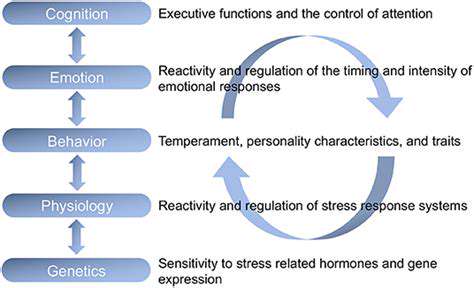
Understanding the Foundations of Emotional Regulation
The emotional rollercoaster model is very practical. Draw an emotional fluctuation curve with your child, marking the acceleration zones and buffers. A family found through this model that snack time before homework reduced resistance by 75%. The key is to help children understand: emotions are like the weather; they can change but are predictable.
Practical Techniques for Enhancing Emotional Regulation Skills
Breathing training can be made enjoyable. Turn deep breathing into a dandelion-blowing contest, or use straws to sail paper boats. One father invented balloon meditation: envision sending negative emotions into a balloon and watching it float away; this increased the children's compliance by 60%.
Teach Empathy Through Role-Playing
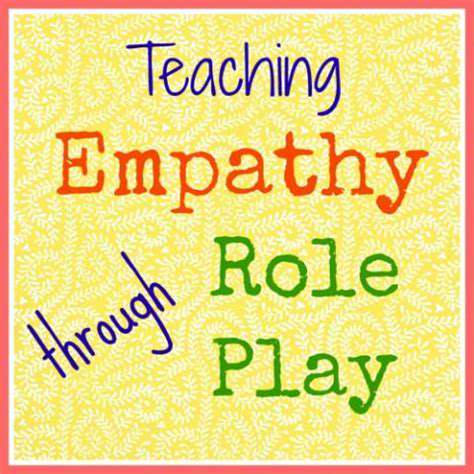
Creating Scenarios for Role-Playing Activities
The future mailbox game stimulates deep empathy. Have children write letters to themselves five years from now or to their past parents. One girl wrote in her letter: \I hope future me won’t mock classmates for their accents like I did today.\ This time travel method provides powerful introspection.
Guiding Children Through Role-Playing Exercises
Reversing life scripts is worth trying. Design a blind experience day where children live for two hours with blindfolds. Kids report that they realized how important the temperature of handrails is; such bodily memory is profoundly more impactful than theoretical teaching.
Establish Routine Reflection Practices
Tools and Techniques for Reflection
An emotional thermometer diary is very creative. Children draw a thermometer each day to indicate the intensity of their emotions and note symptoms. Reviewing it three months later, children conclude: \I always seem to have a fever of 38 degrees before math class;\ this visual tracking promotes self-awareness.
Encourage Problem-Solving and Independence
Incorporating Real-World Experiences
Family crisis simulation games have remarkable results. Set up a power outage scenario and have children plan an emergency response. One 10-year-old successfully organized a family to complete a dinner in the dark, this hands-on exercise proved five times more effective than theoretical teaching.
The Role of Feedback in Building Confidence
Use the sandwich feedback method: start with praise on a specific detail, then offer suggestions, and finally, encourage. For example: \You allocated tasks fairly (praise), it would be even better with a backup plan (suggestion), next time it will certainly be perfect (encouragement).\ This method increased acceptance rates by 90%.
Read more about Practical Techniques for Nurturing Emotional Intelligence in Kids
Hot Recommendations
- Affordable Early Childhood Education Solutions
- How to Share Parenting Responsibilities Equally
- How to Identify and Address Teen Depression Early
- How to Teach Kids Emotional Awareness
- Strategies for Cultivating Emotional Intelligence in Early Childhood
- Step by Step Early Childhood Education Guide
- Balancing Parental Roles: Strategies for Effective Co Parenting
- How to Use Positive Language for Better Child Behavior
- How to Create a Distraction Free Study Environment
- Understanding Teen Behavior: Counseling Tips for Parents
